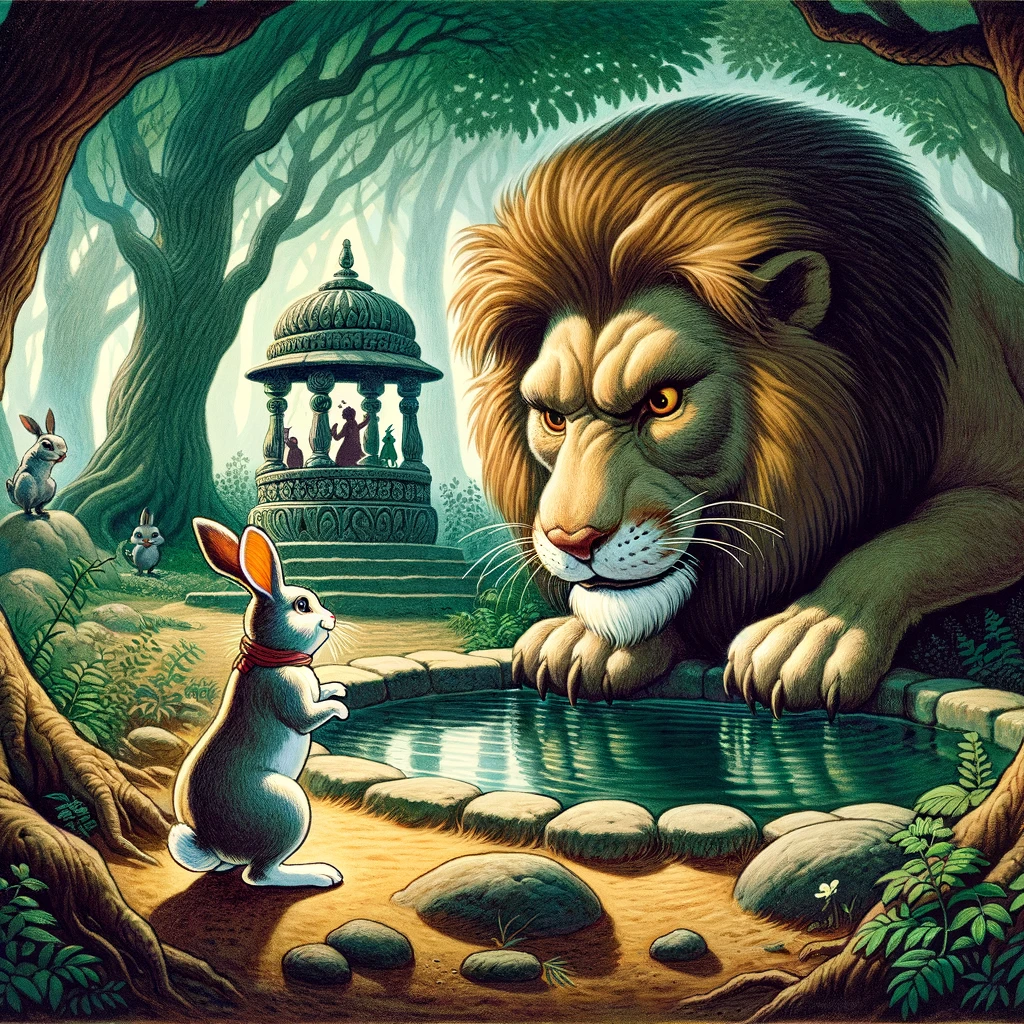In a certain forest, there was a lion named Numskull who was very proud and fierce. He would hunt and kill any animal he saw, causing fear among all the animals in the forest.
One day, all the animals, like deer, boars, buffaloes, and rabbits, decided they had to do something. They came to Numskull and begged him to stop hurting them. They promised that if he stayed in one place, they would send one animal to him each day for food.
Numskull agreed to this plan but warned them that if an animal didn’t come every day, he would hunt and eat all of them. The animals were relieved and took turns sending one of their own to the lion.
When it was the turn of the rabbits, one smart rabbit thought of a plan to stop the lion. He went to the lion very late, making Numskull very hungry and angry.
When the lion saw the small, late rabbit, he was furious and threatened to kill the rabbit and hunt all the animals the next day. The clever rabbit then tricked the lion, saying that there was another lion in the forest who had stopped him and claimed to be the real king.
Numskull was angry and wanted to meet this other lion. The rabbit led him to a well, where the lion saw his own reflection and thought it was the other lion. Numskull roared at his reflection, and the echo made it sound like another lion was roaring back.
Thinking this other lion was very strong, Numskull jumped into the well to attack it and drowned. The rabbit then went back and told all the animals that the dangerous lion was gone. They were all very happy and lived peacefully in the forest.
The rabbit showed that even the strongest can be outsmarted with clever thinking.
The moral of "The Panchatantra: Numskull and the Rabbit" is centered around the themes of cunning over brute force and the consequences of tyranny. In this story, Numskull, a ferocious and oppressive lion, terrorizes all the animals in the forest. To put an end to this tyranny, a clever rabbit devises a plan to outsmart the lion by leading him to a well and tricking him into attacking his own reflection, leading to his demise.
The tale teaches that intelligence and wit can prevail over physical strength and that oppressive and tyrannical behavior will eventually lead to one's downfall. It also underscores the importance of courage and cleverness in facing and overcoming seemingly insurmountable challenges. The story is a classic example of how a small, weak individual can defeat a much stronger adversary through smart thinking and strategic planning.


